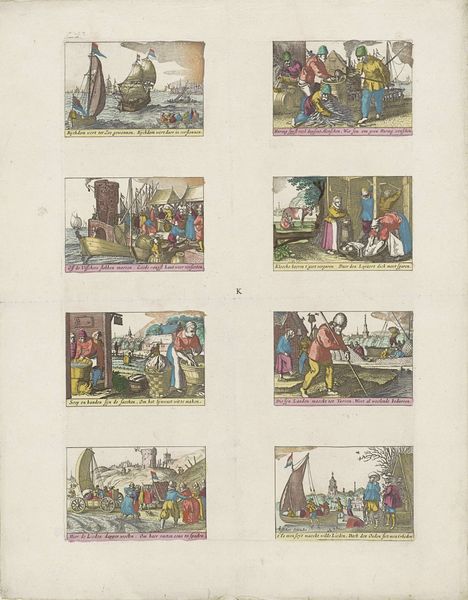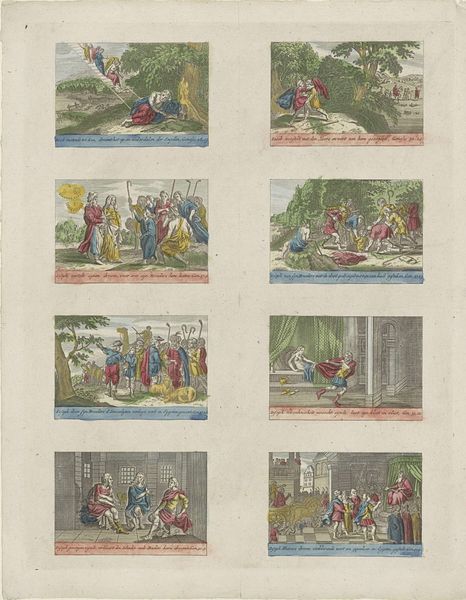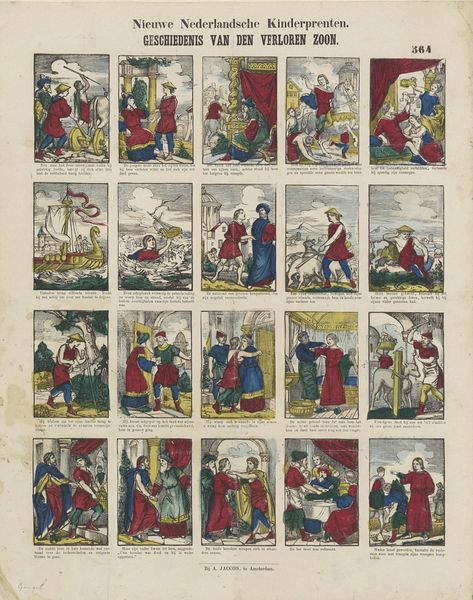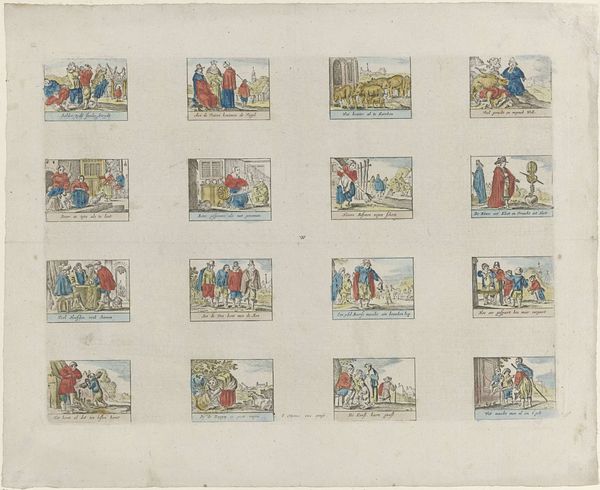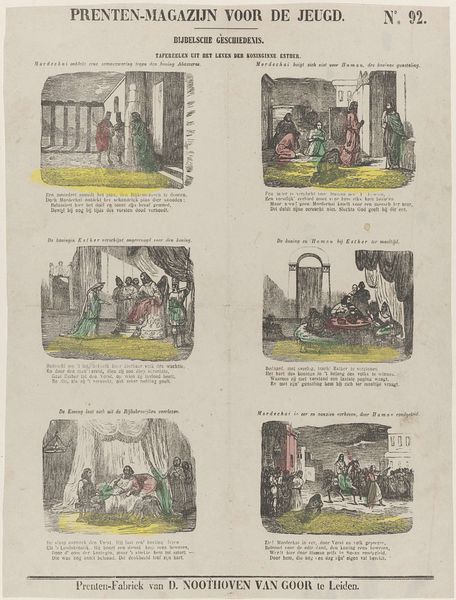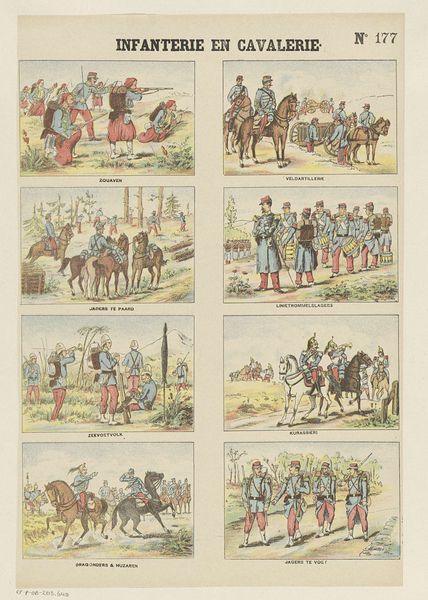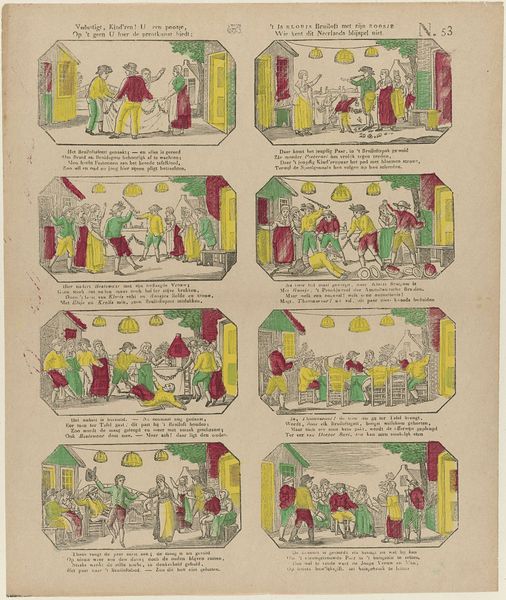
print, etching
#
dutch-golden-age
# print
#
etching
#
genre-painting
Dimensions: height 396 mm, width 322 mm, height 350 mm, width 249 mm
Copyright: Rijks Museum: Open Domain
Editor: This is "Spreekwoorden," a print from sometime between 1601 and 1652 by Claes Jansz. Visscher, here at the Rijksmuseum. It's composed of eight little scenes. Each scene is like a miniature world with these tiny figures acting out different situations. It strikes me as kind of whimsical, almost like a page out of a storybook, though I am not sure of what is going on... What do you see in this piece? Curator: This isn't just whimsy; it's a coded language of Dutch proverbs! Visscher, in essence, has given us a visual encyclopedia. Look closely; each vignette illustrates a common saying. "The blind leading the blind" for instance, a concept laden with moral and social implications then, as it is now. Editor: Oh, I see it now! So it’s like each scene is a puzzle, representing a specific proverb. How would people have understood this back then? Curator: Proverbs were cultural shorthand, universally understood lessons. Visscher is tapping into shared knowledge, a cultural memory bank. The etching medium itself is important – prints were accessible, making these moral lessons available to a wider audience than painted works might have been. Consider the psychological impact: recognizing the proverb is rewarding. Didacticism disguised as entertainment. Editor: I never thought about prints being didactic but it does make sense with this particular print. That makes me wonder about who the intended audience was. Curator: Broadly speaking, the emerging middle class, eager to climb the social ladder and benefit from the wisdom shared, I would expect. What did you initially think these characters and scenes suggested about life in Holland at this time? Editor: Honestly, I was mostly seeing chaotic scenes of everyday life with fighting, beggards, sickness and mundane working class environments.. But viewing it through the lens of cultural memory and shared understanding makes so much more sense. Now, I find the artwork fascinating and strangely meaningful. Curator: Exactly. It holds up a mirror to society, reflecting its values, its fears, and its collective wisdom. We see ourselves anew when we begin to translate.
Comments
No comments
Be the first to comment and join the conversation on the ultimate creative platform.


